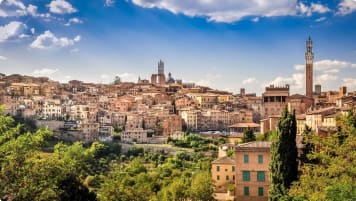Venice, Italy
Explore the sights and wonders of Venice, 'La Serenissima'. A medieval powerhouse, with its stunning architecture, iconic canals, waterways and gondolas. Odyssey offers small group tours for mature and senior travellers couples and solo travelers to Venice and Italy.
12 Nov 20 · 8 mins read
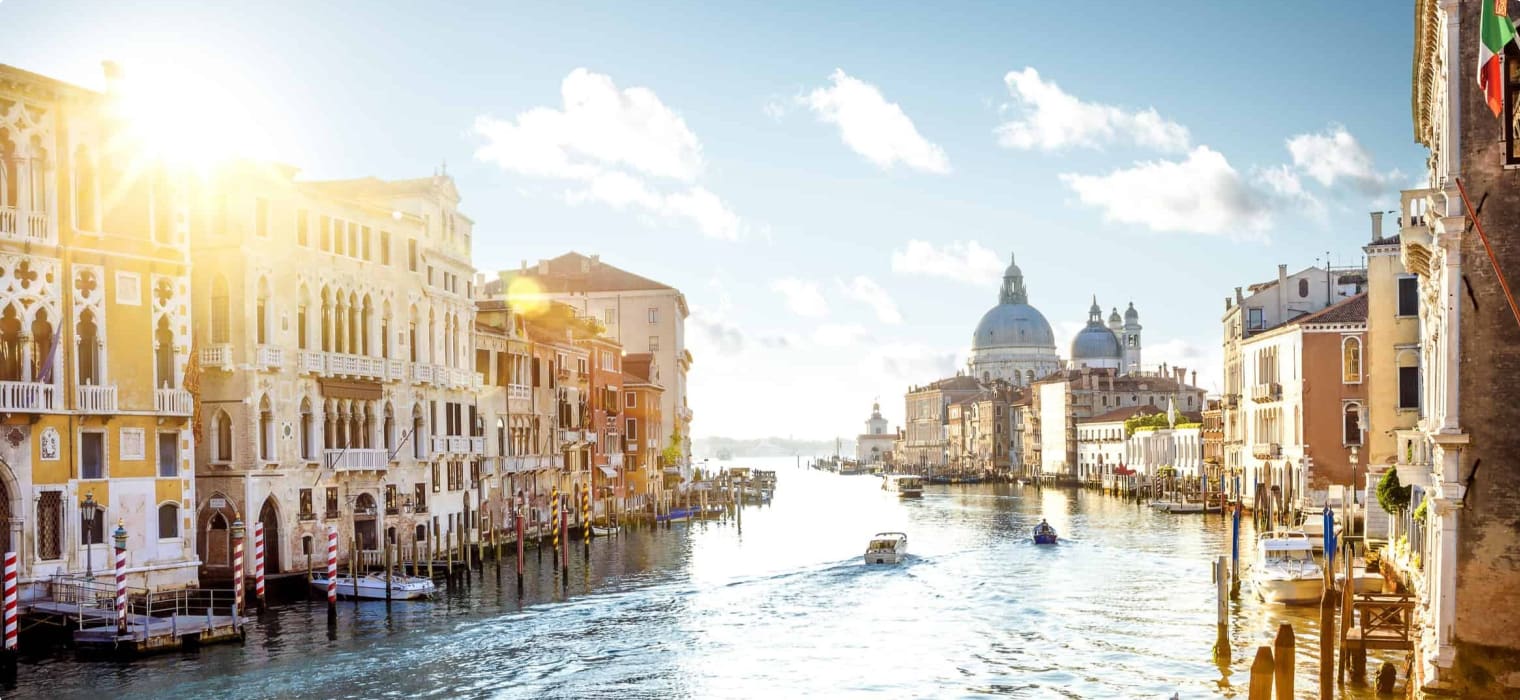
Venice, Italy
Located in the Northeast of Italy, Venice lies in a unique natural position inside the enclosed Venetian lagoon. This area lies between the Po and Piave rivers, and periodically rises and falls depending on the tides. The Venetian lagoon itself has numerous islands, with the city of Venice itself stretching across a series of over a hundred islands, linked by Venice‘s intricate network of bridges, canals and waterways. Known as “La Serenissima” amongst other titles, the city of Venice is internationally renown as one of the world’s most beautiful cities, with its unique landscape, rich cultural heritage, and architectural styles setting it apart from any other. Getting around in Venice is easily one of the most memorable things about the city, with many of the smaller canals and waterways being traversed by gondola, or by small boats, without even so much as a road for cars to drive on. With this in mind be sure to bring a comfortable pair of walking shoes on any tour of Venice.
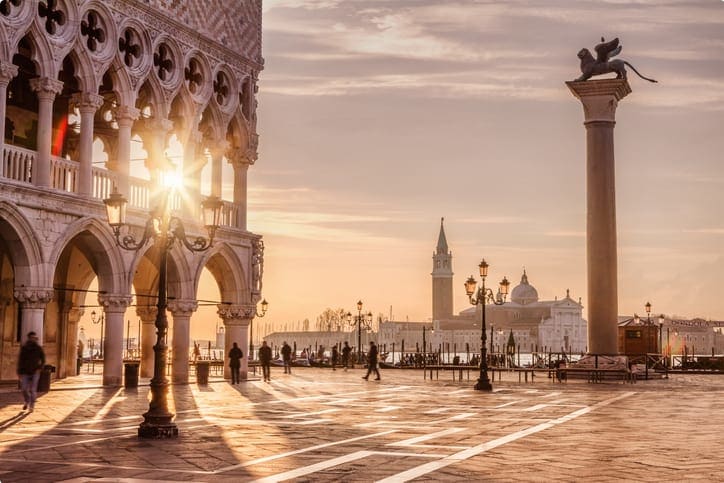
Early History and Ascent
Venice‘s earliest history can be traced back to the Roman era, with the Venetian lagoon serving as a home for local fishermen. However, following the fall of the Western Roman Empire, successive waves of Germanic, and Hunnic invasion sparked a refugee crisis, with an enormous amount of internal displacement, and migration across the Italian peninsula. Some of these Roman refugees sought refuge in the Venetian lagoon region, establishing a settlement in the area and coming under the protection of the Eastern Roman (Byzantine) Empire, with their client state ‘The Exarchate of Ravenna’ administering the Venetian region. In the following centuries, around the 8th century AD, the fall of the Exarchate at the hands of the Lombard’s left Venice increasingly isolated, now one of the only Byzantine outposts left on the Italian peninsula. Venice‘s isolation led to it becoming an increasingly autonomous city, gaining lucrative trading concessions from the Byzantines whilst also serving as a safe haven for migrants and refugees, all of which swelled the city‘s size and prestige. The early 9th century AD saw the city singled out and threatened, with its rising power drawing the attention of the Lombard King Pepin, Charlemagne‘s son, who laid siege to the city. Despite the immense power of Charlemagne’s Kingdom, the city‘s geography prevented Pepin’s success, with Pepin himself dying from the lagoon’s fevers shortly afterwards. This victory firmly asserted Venice‘s role at the nexus of two great powers, with its locus allowing it to flourish as a centre of trade between the east and the west.
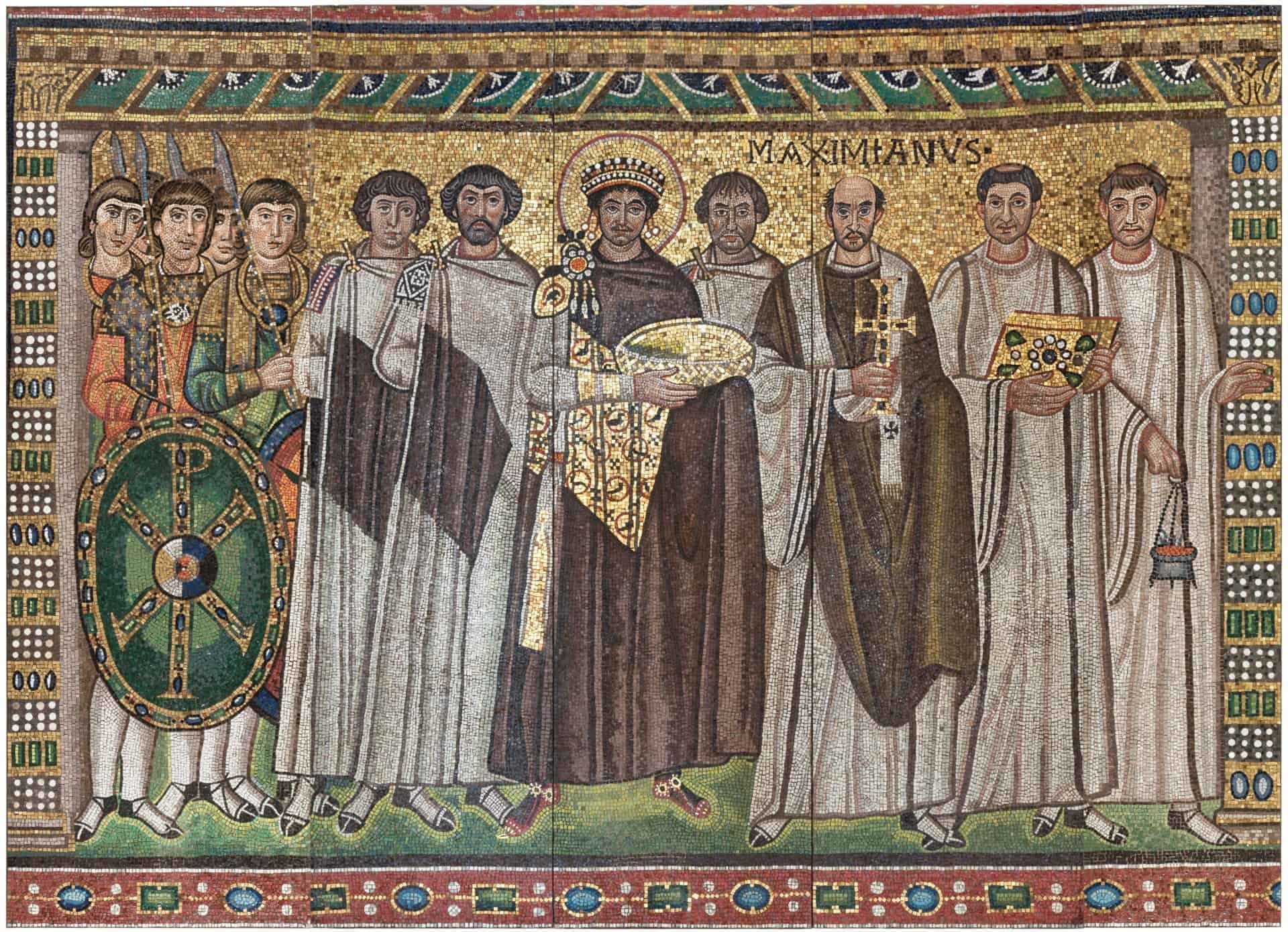
Venetian Golden Age
Venice‘s position between at both the periphery and intersection of east and west afforded the city a unique position. Through the leveraging of its relationships, as well as its own mounting wealth and power, it gained an incredible amount of autonomy from Constantinople, negotiating internationally and administering the city much to the designs of Venice‘s patricians alone. This gradual drift from the Byzantine orbit eventually culminated in the city‘s de facto independence around the late 9th century, whilst still retaining its lucrative trading rights in the east. As Venice‘s power and influence grew, cities and territories along the Adriatic coast were incorporated under Venice‘s control, largely as a means to deny pirates space to operate, as well as expanding the reach of Venice‘s navy. Venetian naval dominance in this region is largely what underscored much of its power, being able to protect and facilitate trade between Byzantium, Asia, and Western Europe. As Venice‘s power grew in relation to the Byzantines, tensions mounted between the two, with the seizure of Venetian businesses in Constantinople in the mid 12th century marking the beginning of a period of increasing animosity between the two. These tensions came to a head in the year 1204, when the fourth crusade saw Venetian soldiers sacking the city of Constantinople, looting much of the city‘s wealth and sacred artefacts, and establishing a catholic led ‘Latin Empire’, that usurped the Emperor in the east for roughly half a century. Following this event Venice‘s power stretched further into the east, seizing islands in the Aegean, as well as major centres such as Crete and Cyprus.
Around this time, Venice re-organized into its characteristic republican government form, with the mid 12th century marking the transition of its Doge from a monarchical type figure to Venice‘s chief bureaucrat. The apogee of Venice‘s power as a commercial and military powerhouse came soon after between the 12th-14th centuries, with its merchant fleet being the largest in Europe, and with the city itself being amongst the largest and in Europe, all despite being located on an island archipelago. This period was characterised by Venice‘s infamous power struggles, with powerful family and political intrigues ruling the day. Venetian merchants were also incredibly influential on the development of European trade and commerce throughout this period, with Venice acting as the prime commercial gateway between Western Europe and Asia, and merchants such as Marco Polo proving instrumental for the development of European commence, and cartography. Whilst other merchant city states vied with Venice for dominance, most notably the Genoese, Venice‘s position remained paramount for centuries to come, having a grip on key commodities and luxuries such as salt, and silks from the east.
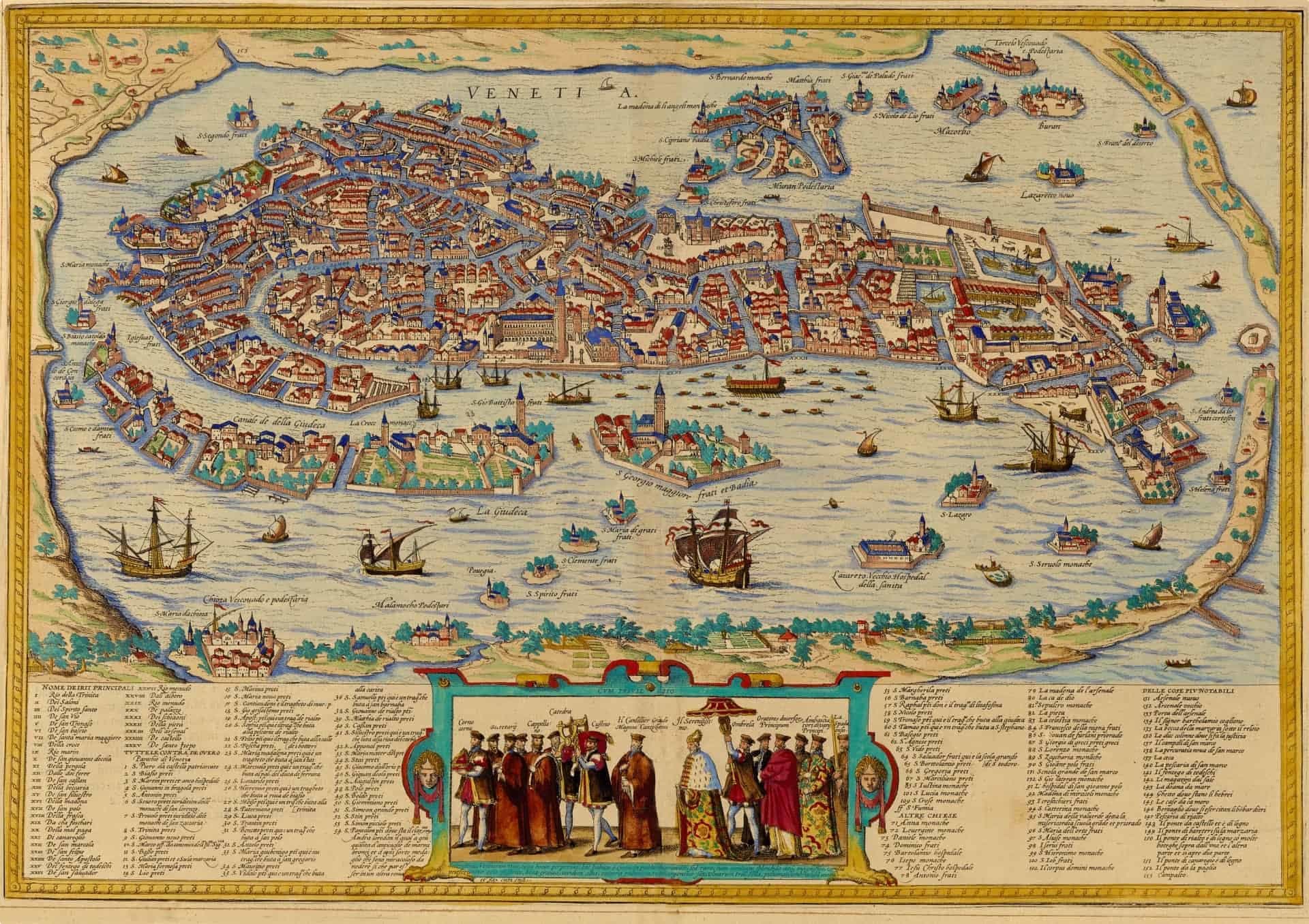
Venice‘s Decline
Venice‘s slow decline follows the progression of key historical turning points that dismantled the foundation of Venice‘s trade monopoly between east and west. The first of these came in the early 15th century, with Ottoman troops seizing Venice‘s Greek holdings in Thessalonica, following which they eventually captured the strategically vital Constantinople in 1453, effectively cutting Venice off from its trade routes coming through the Bosporus and Black Sea, and putting a final end the the last vestiges of the Roman Empire. These events, coupled with the capture of the Christian cities in the levant, left Venice‘s access to eastern trade routes severely diminished. Venice‘s ill fortunes were further compounded with the discovery of the New World following Columbus’ 1492 voyage, which saw the beginning of the Columbian exchange, and brought vast wealth to western Europe, mostly through the gateways of Spain and Portugal. The final significant event in Venice‘s decline was Portuguese explorer Vasco da Gama‘s 1499 discovery of an alternative route to India, around the Cape of Good Hope. This route circumnavigated the Mediterranean entirely, and negated the need for western European powers to rely on traditional trade routes and intermediaries.
In response to the loss of its traditional revenue streams, Venice instead directed its resources regionally, expanding provincially to some of the rich areas of mainland Italy. Unfortunately for Venice, the intricate alliances and delicate balance of power amongst the Italian states proved too volatile, ultimately provoking a coalition response in the War of the League of Cambrai, which marked the beginning of series of wars that would crush Venetian ambitions. Following Venice‘s decline as a merchant republic, the city experienced European history much like many other Italian cities, now subject to the power and influence of their much larger neighbours. The Venetian republic remained independent, though much weakened, until the late 18th century when it was incorporated in to Habsburg Austria, here it largely remained until the final formation of the Kingdom of Italy in 1866.
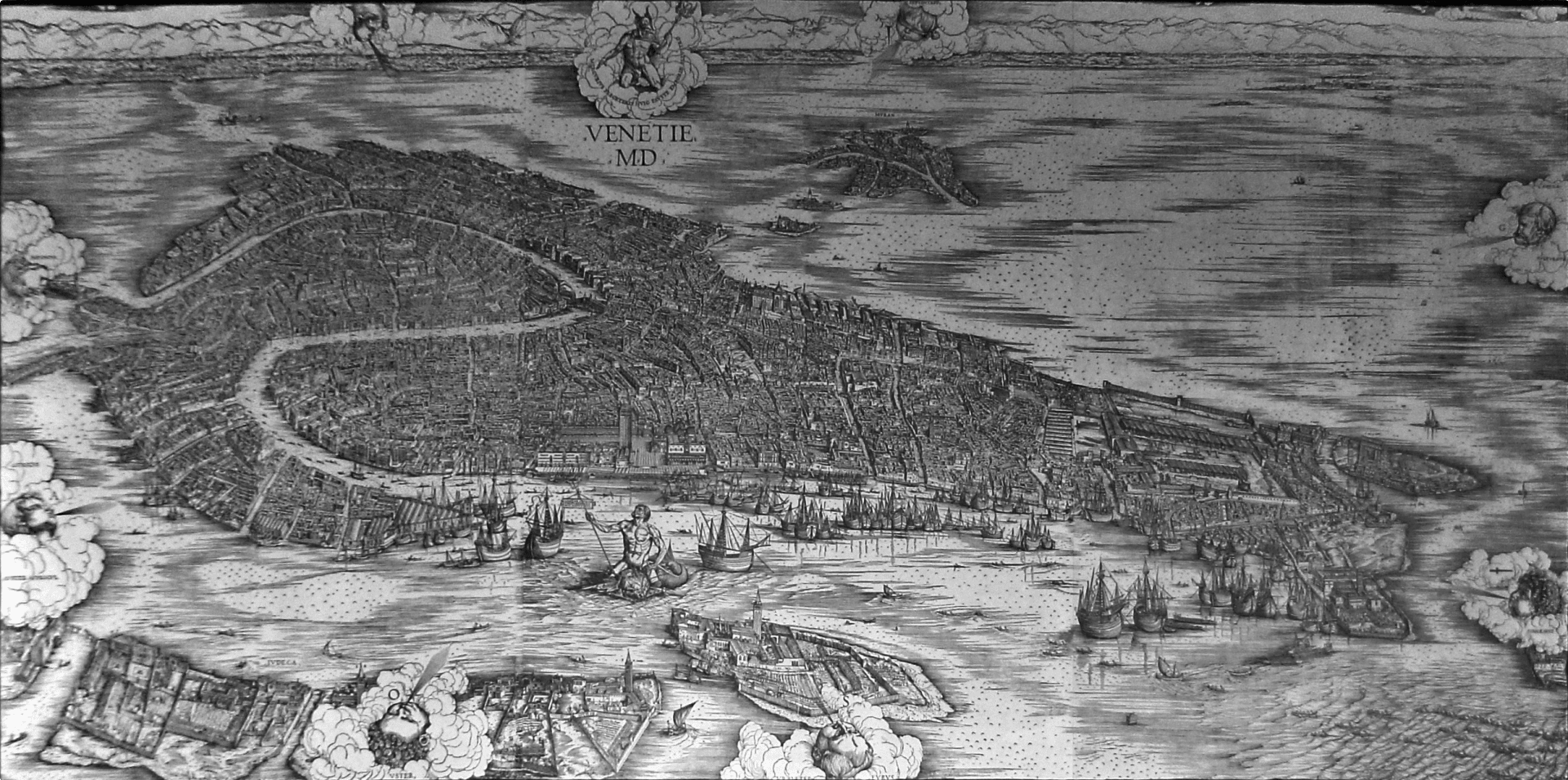
Travelling to Venice
Venice is one of the most distinctive and unique cities in the world, with much of the city listed as a UNESCO world heritage site. Unlike a trip to many other cities, a tour of Venice will most likely be a walking tour, though you may find yourself water-bound on a Gondola ride through some of the smaller canals. No cars are allowed in the city, though some parking can be found before entering, so be ready for a good walk on any tour to Venice. This having been said, a boat is also a great way to explore Venice, crossing under Venice‘s bridges and archways, while taking in its historic cityscape from this unique vantage point. Aside from the omnipresent beauty of the city‘s waterways and canals, there are a number of landmarks and historic buildings one should visit on their trip. The Piazza San Marco (or St Mark‘s square), is a good place to begin, easily being one of the most recognizable places in the city, and having been the social, religious, and political centre of Venice for centuries. Flanked on each of its faces with some of Venice‘s most famous buildings, the Piazza San Marco is the heart, and historical centre of the city. On the eastern face of the Piazza sits Saint Mark’s Basilica, originally constructed in in the 9th century AD, the Basilica was made to house the body of St Mark, famously stolen from Alexandria by Venetian merchants, who hid the body in a barrel of pork fat. St Mark‘s body, along with some of his relics went on to become some of Venice‘s most famous iconography, with the winged lion in particular becoming synonymous with the Republic of Venice. Today’s Basilica dates back to the late 11th century, and features a distinctive Italo-Byzantine architectural style that was popular during Italy‘s proto-renaissance, as well as an iconic bell tower, used to sight ships, and act as a guide for those coming into harbour.
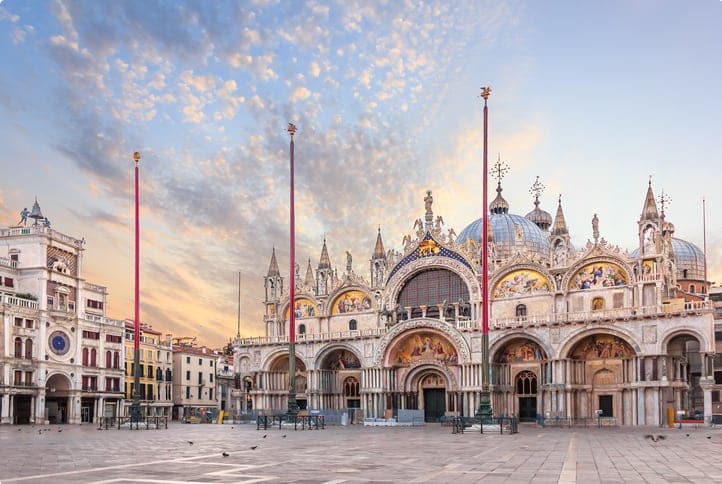
Also adjacent to the piazza is the Palazzo Ducale (or the Doge’s Palace), traditionally this served as the apartments for Venice‘s Doge, as well as functioning as the primary administrative centre of the city. Built in the late 12th century, it is characterised by its stunning façade and gothic architecture, and has been an influential building in informing architectural style across the western world. Today the Palazzo Ducale operates as an art museum, with pieces from Venice‘s storied past, as well as from across Europe. The final notable building of the Piazza is the Biblioteca Marciana (or Library of Saint Mark). Built to house manuscripts and classical texts, the building serves as one of Europe’s earliest public libraries, having been constructed in the late 15th century, and features a stunning façade that characterises Venetian Renaissance architecture. Some other sights and activities to check out on your trip to Venice include the famous Venetian Arsenal, the Basilica of Santa Maria della Salute, as well as the Rialto markets, all of which can are simply a walk away. Much like some of Italy‘s other great cities like Florence, or Rome, the sheer depth of history in Venice is staggering, with the long and storied history making for an unforgettable experience. Each of Venice‘s uncountable landmarks and buildings are steeped in the rich heritage of countless centuries. To this end, one of the best ways to experience what Venice has to offer is through a small group tour. Odyssey specialises in this kind of tour, offering an engaging and intimate tour to Venice that highlights what the city has to offer.

Articles
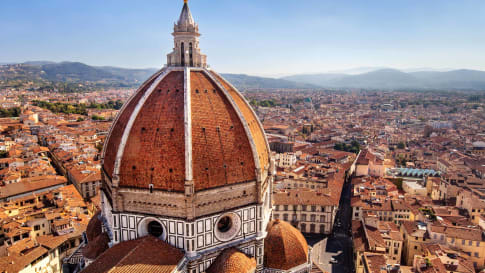
Questions about Italy
Escorted small group tours for mature and senior travellers to Italy. Designed for couples and solo travellers who like to explore and enjoy learning as they travel to Rome, Florence, Genoa, Venice, Naples, Sicily or Lake Garda and beyond.

Trip advice for Travellers going to Italy
Trip planning advice for Mature Travellers touring Italy Italy is one of the world’s great tourist destinations. This Trip planning advice for mature travellers going to Italy should assist you […]

Venice and the History of Maps
Venetian Maps and How they Ruled the World ‘Venice was always a frontier,’ Peter Ackroyd (2009) declares in Venice: Pure City. ‘When the empire was divided in the time of Charlemagne, the lagoons of Venice…

Secrets of Venice: A History of Espionage
Secret Venice: The Council of Ten and Medieval Espionage The city-state of Venice emerged on a lagoon from the ruins of the Roman and Byzantine empires in the 9th century and grew to become the greatest…
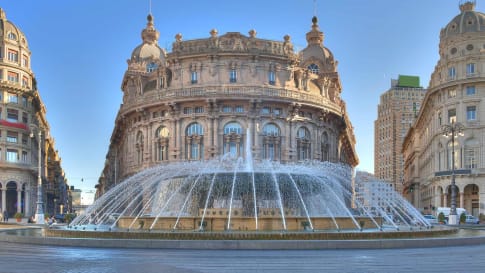
History of Genoa, Rival to Venice
In this article, we will look at the history of Genoa, and its rivalry with Venice that led to several wars fought between the two city-states in the 12th to 14th centuries.
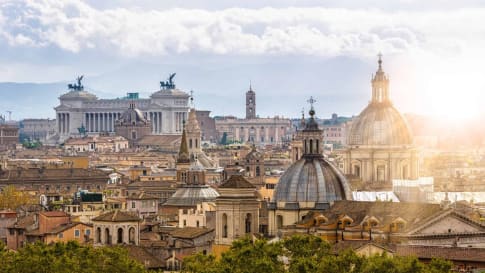
Rome, Italy
Explore the sights and wonders of Rome, the eternal city. Heart of an ancient empire, and capital of the Italian Republic. Odyssey offers small group tours for mature and senior travellers couples and solo travelers to Rome and Italy.
Related Tours
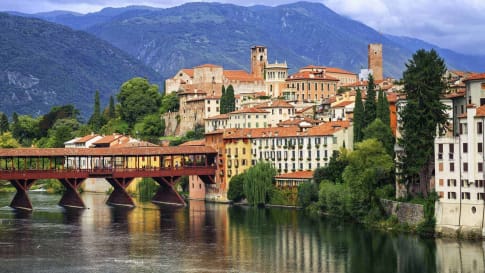
22 days
Oct, AprTour of Northern Italy's Lakes and Alps
Visiting Italy
A European tour to the stunning Lakes Region of Italy. Your travel experience begins in Milan, daily itineraries include two of the region’s lakes - Garda and Maggiore, plus the Roman villa Desenzona and a day in Cinque Terre. Local guides share experience and knowledge with you on this escorted small group tour for couples and solo travelers.
From A$14,895 AUD
View Tour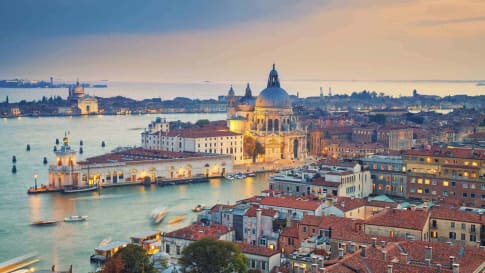
27 days
DecEuropean Cities Small Group History and Cultural Winter Tour
Visiting Albania, Croatia
An escorted tour A Journey that commences in Rome and takes in 12 destinations along its journey to Athens. This is an off season small group journey with like minded people. A small group tour across Southern Europe with local guides sharing authentic in-country authentic experiences for mature couples and solo travellers.
From A$17,295 AUD
View Tour
14 days
Sep, MayLakes and Landscapes of Northern Italy | Short Small Group Tour for Seniors
Visiting Italy
Our small group tour begins in the cosmopolitan city of Milan and ventures to 2 of the region's lakes - Garda and Maggiore. Our tour uncovers a wealth of natural beauty, castles, serene waters, snow-capped mountains, and breathtaking scenery.
From A$9,225 AUD
View Tour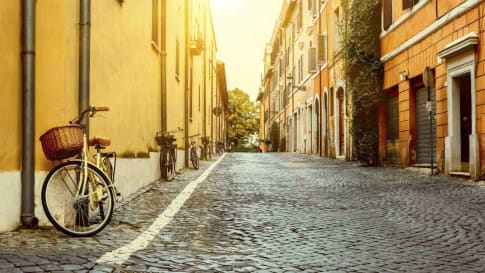
22 days
Sep, Apr, MarHeritage, Culture and History of Italy | Small Group Tours for Seniors
Visiting Italy
Rome, the world’s first superpower, lasted for almost a thousand years. In this small group tour for senior couples and solo travellers we thread our way through the Rome of the Emperors, then through the Italy of the Renaissance, Michelangelo, the Medici, and the Borgia. In the south, we visit the cosmopolitan city of Naples as well as Pompeii and the island retreat of Capri.
From A$13,695 AUD
View Tour
11 days
Sep, MayHeritage, culture, history of Italy, seniors small group - Short Tour
Visiting Italy
Odyssey's small group tour features the best of the Italian countryside as well as the great cities and icons of Italy. We will see the Renaissance cities of Florence, Pisa, and Lucca as well as the Umbrian medieval cities of Perugia.
From A$8,195 AUD
View Tour
18 days
Aug, SepArt and History of Italy | Small Group Tour for seniors
Visiting Italy
Taken as a whole, Italian Civilization (which includes, of course, the splendid inheritance of Ancient Rome) is absolutely foundational to Western culture. Music, Painting, Sculpture, Architecture, Literature, Philosophy, Law and Politics all derive from Italy or were adapted and transformed through the medium of Italy.
From A$16,695 AUD
View Tour
20 days
JulItaly Puccini Festival small group Tour
Visiting Italy
The Puccini festival is an escorted tour complete with local guides as part of our small group travel program, we will also visit Rome, Siena, Florence, Lucca, Viareggio, Genoa, Milan, Verona, and Venice. Join like minded people on this European tour in Italy. For solo travellers there is a nominal single supplement charged.
From A$15,995 AUD
View Tour
